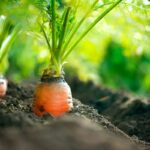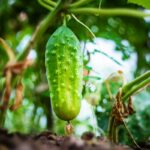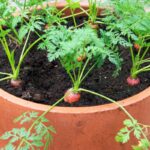For gardening enthusiasts and pickle lovers alike, growing your own pickling cucumbers can be an immensely rewarding experience.
Not only does this venture yield an impressive bounty of fresh cucumbers for your pickling pleasure, but it also invites you into the world of cultivating a truly unique and versatile crop.
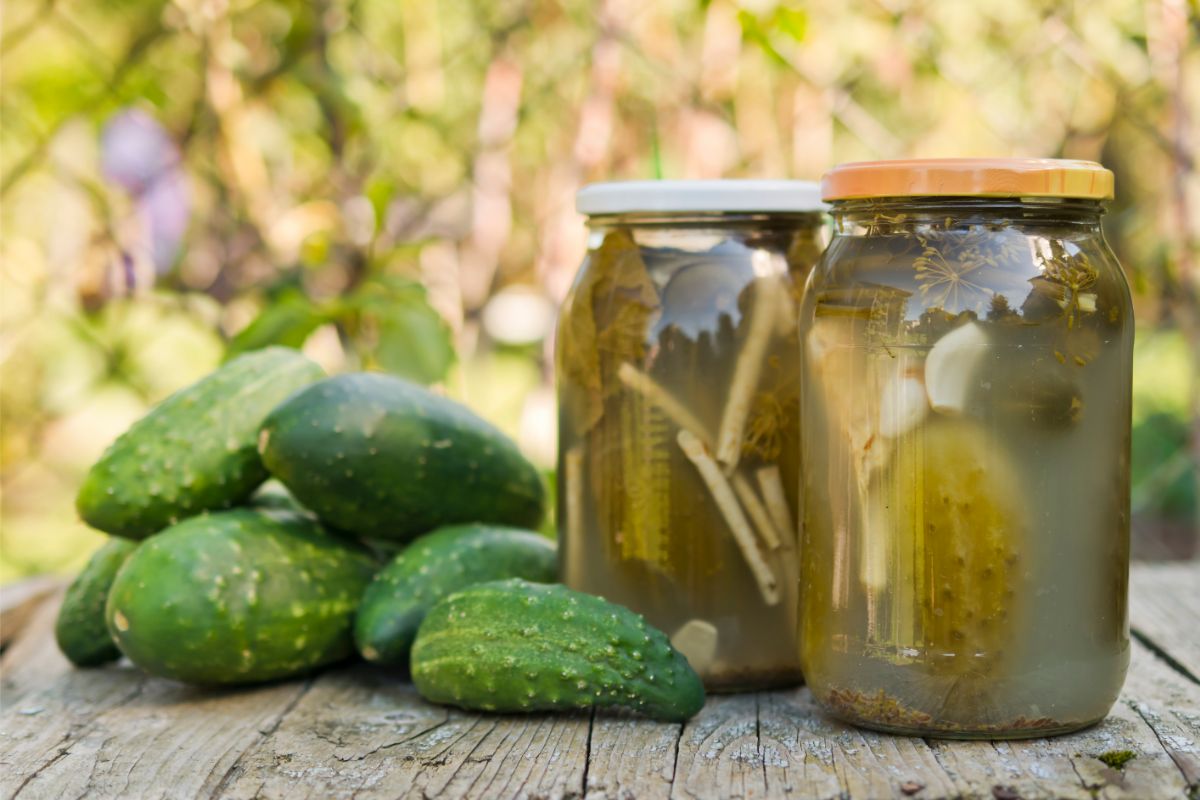
In this article, I’ll guide you through everything you need to do to grow pickling cucumbers and answer some commonly asked questions.
Identifying The Best Cucumbers To Grow For Pickling
Selecting the right variety is paramount when it comes to growing cucumbers for pickling. These cucumbers differ from typical salad cucumbers; they are smaller, roughly 4 to 6 inches long, with thin skins and firm, crunchy flesh.
The most coveted qualities are consistency in size and shape, as well as a high yield.
‘National Pickling’ Cucumber
This cultivar is an exceptional choice for pickling. They produce consistently sized, straight cucumbers with a light green colour. The skin is slightly bumpy, perfect for holding pickling brine.
‘Boston Pickling’ Cucumber
An old favourite amongst gardeners, these cucumbers are known for their abundant yield and their crisp, tender flesh.
‘Bush Pickle’ Cucumber
A compact bush variety perfect for smaller gardens or container growing. They produce a plentiful amount of small, crunchy cucumbers perfect for pickling.
How To Grow Pickling Cucumbers
Now you’ve picked your variety of pickling cucumber, it’s time to understand the growing basics.
The cultivation of pickling cucumbers can be broken down into a few essential stages: preparation, planting, maintenance, and harvesting.
1. Preparation
Choose a sunny location with well-drained soil. Cucumbers love warmth and sunlight, and a good 6 to 8 hours of direct sunlight each day will do wonders for their growth.
The soil should be rich in organic matter; add compost or well-rotted manure to boost its fertility.
2. Planting
Cucumbers can be directly sown into the ground once the threat of frost has passed, usually around late spring.
Plant the seeds about an inch deep and roughly 36 inches apart, as cucumbers tend to spread.
If you’re opting for ‘Bush Pickle’, you can reduce the spacing to around 24 inches.
3. Maintenance
Regular watering is key as cucumbers are 95% water. Keep the soil consistently moist but avoid waterlogging.
Mulching can help retain soil moisture and suppress weeds.
As the plants grow, consider using a trellis to save space and improve air circulation, reducing the risk of diseases.
4. Harvesting
Most pickling cucumbers will be ready to harvest within 50 to 60 days after planting.
It’s better to harvest them when they’re young and tender, typically when they reach their mature size but before they start to turn yellow.
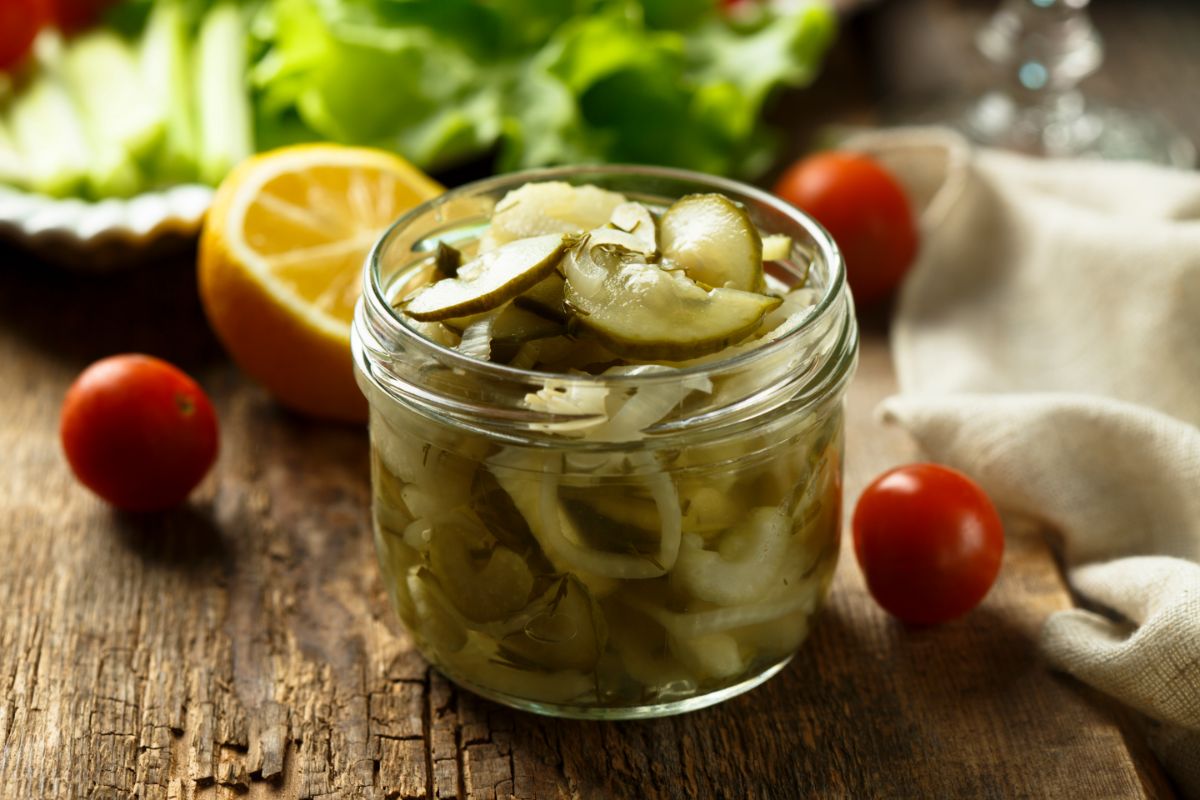
Can You Grow Pickling Cucumbers In A Pot?
Here are some tips for successfully growing pickling cucumbers in containers:
Select the Right Pot: A deep, spacious container is crucial for cucumbers as they have extensive root systems. A container that is at least 12 inches deep and 20 inches in diameter would be ideal.
Choose the Right Variety: Some cucumber varieties are more suited to container gardening than others. ‘Bush Pickle’ cucumbers, for example, are a bush variety that takes up less space, making them perfect for pot cultivation.
Use Quality Potting Soil: A well-draining, nutrient-rich potting mix is essential for growing cucumbers in containers. A soil mix rich in organic matter can also help retain moisture.
Provide Support: Even in pots, cucumbers will appreciate a bit of support. Consider installing a small trellis or stake in the pot for the cucumber vines to climb.
Water Regularly: Containers dry out faster than garden soil, so regular watering is essential. However, avoid overwatering as this can lead to root problems.
Ensure Ample Sunlight: Cucumbers need at least 6-8 hours of sunlight each day, so place your pot in a sunny location.
Fertilise: Since potting soil can quickly exhaust its nutrients, fertilise your cucumbers every 2-3 weeks with a balanced vegetable fertiliser.
How To Store Your Pickling Cucumbers After Harvest
Immediate Post-Harvest Care
The moment cucumbers are picked from the vine, they start losing their freshness. Therefore, it’s best to process them as quickly as possible. If you can’t pickle them immediately, follow the steps below to store them effectively:
Clean Your Cucumbers: Gently rinse your freshly harvested cucumbers under cool running water to remove any dirt or residues. Do not scrub them, as this could damage their skin.
Dry Thoroughly: Pat the cucumbers dry with a clean towel. Moisture can encourage the growth of mould, so it’s important they are dry before storing.
Short-Term Storage
For short-term storage, place your cucumbers in the crisper drawer of your refrigerator:
Use Plastic Bags: Place your cucumbers in perforated plastic bags. The bag will help maintain humidity around the cucumbers while the perforations will allow excess moisture to escape.
Set the Right Temperature: The refrigerator should be set at a temperature between 10°C to 12.7°C, slightly warmer than the usual refrigerator temperature. Cucumbers can suffer from ‘chill damage’ if stored below 10°C for more than 2-3 days.
This method can effectively store cucumbers for around a week.
Long-Term Storage: Pickling
For longer storage, pickling is an ideal solution:
Prepare Your Pickling Solution: A basic brine includes water, vinegar, and pickling salt. You can also add sugar, garlic, dill, and other pickling spices for flavour.
Prepare Your Cucumbers: Cut off the blossom ends of the cucumbers as they contain enzymes that can soften your pickles. Then, you can leave your cucumbers whole, or slice them into rounds or spears, depending on your preference.
Pack and Pour: Tightly pack your cucumbers into clean, sterilised jars. Pour the brine over the cucumbers, ensuring they are fully submerged.
Seal and Store: Wipe the rims of the jars clean, place the lids on top, and screw on the bands until they are fingertip-tight. Process the jars in a boiling water bath for long-term shelf storage or simply refrigerate them.
Final Thoughts
Growing your own pickling cucumbers can be a cost-saving as well as a great experience.
So whether you’re a gardener with plenty of ground space or an urban grower with some pots handy, I hope this post has helped you understand just how easy it is to grow your own pickling cucumbers at home.
- Can You Grow Bell Peppers Indoors? A Guide For New Gardeners - November 14, 2023
- Composting Basics: Can You Compost Mushrooms? - November 6, 2023
- A Gardener’s Guide To Growing Carrots In Raised Beds - November 1, 2023



